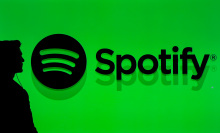About a year ago, writer and University of Berkeley professor Grace Lavery accepted a six-figure deal from Substack, under the newsletter platform's Pro scheme. At the end of January this year, Lavery decided to leave the platform, "belatedly," severing contractual ties and closing her account.
"I’ve never been under any illusions about why a literary scholar specializing in Victorian literature and psychoanalysis was offered a lot of money by a tech startup," she wrote in a post on her blog. "It's because I’m a trans woman, and about a year ago, Substack was facing public criticism for its publication of a number of authors critical of the movement for trans civil rights."
Lavery acknowledged that Substack's publisher agreement insists users must not use the platform "in a manner that is fraudulent, deceptive, threatening, abusive, harassing," but wrote, "I no longer have any faith that the executive team at Substack will enforce these Terms of Use, or the Content Guidelines. Because I do not trust that the platform will enforce its own rules, I’m leaving."
Her move comes after a long trail of transphobic incidents on Substack. Lavery is now a part of an exodus of Substack writers, overwhelmingly considering it a home for users expressing transphobic comments and making money for such views (notably, Lavery herself was suspended off Twitter last month, for saying she hoped the Queen would die when diagnosed with Covid-19).
Such a collective reaction to Substack's refusal to tackle misinformation and hate speech is still happening. Writers are publicly speaking out about leaving Substack or calling out the company's policies when it comes to free speech, content moderation, and censorship.
It happened first in 2021, when trans writers including Jude Ellison Sady Doyle, Nathan Tankus, and Yanyi called out Substack in the wake of the platform's refusal to remove harmful content. In a final post on Substack before departing for nonprofit publishing platform Ghost, Doyle wrote that Substack has chosen to "platform hate groups." Meanwhile, Yanyi wrote, "I have no faith that Substack will protect me or other trans people from harassment or abuse."
This type of hateful content has been produced by people like British writer Graham Linehan, who posted libellous harassment, transphobic remarks, and hate speech towards Lavery and others through his Substack newsletter. Linehan was permanently kicked off Twitter in 2020 for "repeated violations of our rules against hateful conduct and platform manipulation." He remains on Substack, however, with thousands of paid subscribers.
Substack itself published a post around this time, doubling-down on their "hands-off philosophy" on content moderation, saying that writers and readers on Substack are "in charge" of what they say and who they subscribe to. "Writers own their content and their mailing lists and have full editorial control on Substack. Readers choose for themselves which writers to invite into their inboxes and their minds," the post read. It underscored the ideas in Substack's content moderation guidelines: that the platform is "different from social media platforms," writers are paid by the readers, who, in turn, "are in full control of what they see."
In January 2022, Mashable reported on Substack newsletters that promote anti-vaccine sentiments and COVID-19 misinformation, with writers like Dr. Joseph Mercola, Steve Kirsch, and Alex Berenson, each known for publishing a slew of misinformation surrounding the pandemic, finding a home on Substack after being deplatformed elsewhere. "The reason I chose a paid membership platform on Substack is because it will protect all of my content from censorship," Mercola wrote of launching his newsletter on the platform.
Following this report, Substack subsequently published a post through its company newsletter, written by CEO Chris Best and co-founders Jairaj Sethi and Hamish McKenzie. They described the "growing pressure" they face to censor content that "to some seems dubious or objectionable."
"We believe that when you use censorship to silence certain voices or push them to another place, you don't make the misinformation problem disappear but you do make the mistrust problem worse," they wrote.
The founders added that they will continue to give power to both readers and writers, and will "take a strong stance in defense of free speech."
Tweet may have been deleted
This post, for Lavery, was a tipping point and the motivation behind her final decision to leave Substack.
She tells Mashable that her complaints about Linehan were "being taken seriously" by Substack's content moderation team via email, but they insisted "his conduct passed Terms of Use." Lavery also cited the distinction between free speech and harassment, saying, "It seems really weird that [Substack] is unwilling to make that distinction."
K. Tempest Bradford, a writer and teacher, also left Substack this year, in a similar protest.
"By not moderating, Substack isn't creating more trust, they're fostering an environment that's unsafe for marginalized, vulnerable people," she tells Mashable. Bradford says Substack's statement in January wasn't the catalyst for her decision, but it "certainly solidified" that she had made the right one for herself.
"It's irresponsible, especially at this stage of the internet," she says.
Similarly, Kirsten Han, a journalist and activist based in Singapore, was amongst the writers who left the platform. Han wrote a newsletter on Substack about politics, civil society, and social justice in Singapore; she was also the recipient of a grant from the company in April 2020. But she left Substack last year (moving to Ghost, too), citing transphobia on Substack and even raising direct concerns with the company about Linehan's content. This past year, she has also used Twitter to call out COVID misinformation on Substack and the company's hands-off approach to content moderation.
"Substack and tech companies should be working to be transparent, thoughtful, to work with civil society on their responsibilities," she says.
Like Bradford, Han tells Mashable that Substack has a responsibility "to moderate more," especially because some of the newsletters spreading hate speech "are getting a wide reach" and being monetized.
Many of the newsletter writers passing along misinformation and reiterating transphobic views are amongst Substack's paid users. Writers who use a subscription model include Linehan, Mercola, Berenson, and Kirsch. Paid creators keep 90 percent of the revenue, while Substack keeps ten. It's an appealing offer: the platform offered is sleek, efficient, and potentially financially rewarding.
According to the Center for Countering Digital Hate (CCDH), Substack has accumulated at least $2.5 million in revenue due to anti-vaccine newsletters, per year. The non-profit NGO said that Mercola and Berenson are the main contributors to this revenue, making "a combined $183,000 a month."
And, despite backlash from a band of writers and users, Substack has raked in the numbers overall: the company garnered over 35 million views in January 2022 alone, according to SimilarWeb. There are over 1 million paid subscriptions to publications on Substack, according to the company, and the top 10 paid publications on the platform "bring in more than $20 million a year."
Lavery, Han, and Bradford all seem to agree that the financial gains writers — those who spread harm and hate —are deriving from Substack furthered their dissatisfaction with the company. Such numbers fed into Bradford's withstanding argument for leaving, she says: "The revelation that the company paid certain writers what amounted to a salary in order to get them to publish their newsletters via Substack."
Han appreciates the argument Substack's leaders are grappling with.
"I get that it’s a complicated issue. I get the desire to protect and defend free speech and be a platform for free speech. It’s an issue I work on a lot in Singapore. I just felt like [Substack] wasn’t making sufficient distinctions and being upfront with themselves about their responsibilities. If what’s being spread is false, that’s not free speech. I don’t feel comfortable with that false equivalency being set up," Han says.
Lavery also expresses "some sort of sympathy" with Substack.
"If they were found to have editorial control over any part of their platform, they would lose their business degree – it would fall to the floor," she says. "The moment they do that, they stop being a publisher, and they start being a publication."
When approached for comment, a Substack representative told Mashable that they "respect writers' decision about where they want to publish their work," which is why they "make it easy" to pack up a Substack newsletter and neatly transition to other platforms.
"While it sucks whenever writers leave the platform, we continue to believe in freedom of the press and freedom of expression, and we will continue our hands-off approach to content moderation," they said.
Tweet may have been deleted
Notably, there are those who are critical of Substack but continue to use the platform. Kent Anderson, a former publisher at Science from the American Association for the Advancement of Science and publishing director of the New England Journal of Medicine, has been a Substack user since 2018, via his newsletter The Geyser. He has been outspoken about the presence of misinformation on the platform.
"I got to know the founders [of Substack], and interviewed them for The Geyser, where they touted Substack as an alternative to misinformation platforms and one devoted to the truth," Anderson says. He believes they have since "abandoned" their stance.
"When you enter the information space, you have a duty to care — about whether the information you're putting out is accurate, about what readers might think or believe based on what you tell them, about your reputation within society, and about integrity and compassion," Anderson says. "This goes for anyone involved, including platform providers." He adds Substack is feeding into "a vicious cycle" of misinformation and distrust.
Anderson has not yet left Substack, but tells Mashable that he is "considering options and alternatives," continuing to remain on the platform for the moment.
For many, the attractiveness Substack can offer has just not been enough to mitigate certain decisions. Han tells Mashable, "In a way, [leaving] worked out. Before all of this, though, I was happy at Substack."































